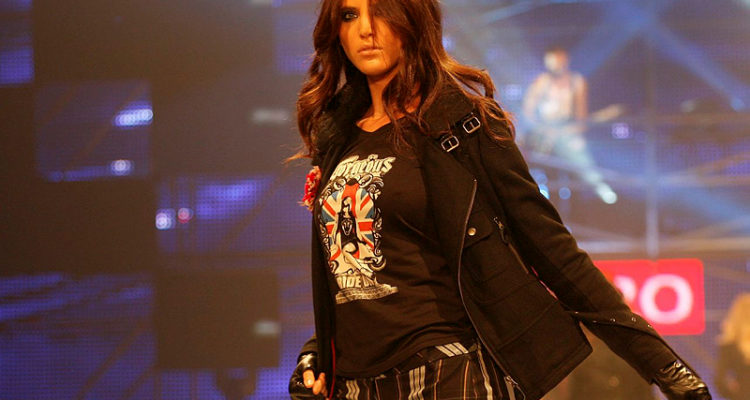An exhibition at the Israel Museum attempts to answer the question: What is Israeli fashion?
By TPS
Israelis have a reputation for wearing practical comfortable and durable clothes that express an informal and tough mindset, always ready for emergencies.
But what is Israeli fashion? “Fashion Statements: Decoding Israeli Dress,” an exhibition hosted at the Israel Museum until April looks at the history of Israeli fashion and tries to answer exactly this question.
Tamara Yovel Jones one of Israel’s leading fashion designers, a former head of the Fashion Design Department at Shenkar College of Engineering and Design, who stepped down as head of the Department of Jewelry and Fashion at the Bezalel Academy of Arts and Design, came up with the concept a couple of years back and from that moment a team of curators began to ask themselves what is Israeli fashion and to search for its roots.
“This exhibition is a document that shows that there was and there is fashion creativity in Israel,” Jones tells TPS, “and we tried to decode the genetics of Israeli fashion.”
Jones explains that it was very important for her to create an exhibition that would display what has been created in Israel since the early days of the State.
“There were unique phenomena in Israel regarding fashion,” says Jones, “all the clothes that were used in the kibbutzim were unique, and also in the sixties the designers tried to create a fashion inspired by the place.”
Israel’s fashion past
Jones recalls a time “when people from all over the world arrived in Tel Aviv to buy Israeli fashion.” and says that is something that was important for her to show.
“Today it sounds crazy. We live in a time when most young people and adults run after foreign brands, I also buy at Zara. But creativity really does exist and still exists. I hope that people one day will wear again creative clothes,” she said.
During work on the exhibition, Jones and the curators dealt with issues such as the attempt to find a new Israeli-Jewish dress, the dichotomy between the spartan pioneers and more urban habits, and the decline of the local industry due to the cheaper production in the East and the entry of fast fashion chains into the local market.
“This is the story of the rise and fall of the Israeli fashion industry,” she explains.
Jones, who was a designer for “Roberto Cavalli” between 1973 and 1981, still remembers the golden age of Israeli fashion in the 1960s and 1970s, when “more than 500 buyers used to arrive here from abroad and the biggest stores in Europe would buy Israeli fashion.
“Through this exhibition I also wanted to raise awareness of the economic potential in this market. If it happened in the past, it could happen again today.”
Jones who today is consultant and coach to young designers and graduates of fashion design academies, says many capable young fashion designers today who can’t find a job.
“We don’t really exploit the creativity of the young Israeli fashion designer. Some of them work in big companies such as Castro or FOX, where they design daily life clothes but not fashion. Today everybody wears the same clothes and fashion is only in the museums.
“I would like to see in the streets again more fashion and less clothes,” Jones said.
The exhibition displays over 150 outfits by 60 designer and is organized in four spaces: Holy/Land, Austerity/Prosperity, Made in Israel and Fashion Now, tracing the history of Israeli fashion from pre-state days up to the present.
As she walks between the mannequins, curator Noga Eliash-Zalmanovich tells TPS that “there is not one Israeli fashion, but many kinds.”
The range of fashions on display run from the contemporary, characterized by the complex relationship between local and global identity, craftsmanship and cutting-edge technology.
There is fashion influenced by local fabrics and cultural influences such as Dorit Bar Or’s kaffiyeh inspired outfits kicked up a storm a couple of years back for their “appropriation” and “eroticization” of the Palestinian national head dress.
While designers such as Dorin Frankfurt, Maya Bash and the Muslin Brothers have gone back to the aesthetics of socialism with utilitarian and monochromatic fabrics.
All in all, Eliash-Zalmanovich hopes visitors will walk away understanding that Israeli fashion is a significant part of Israeli culture and even though there isn’t one overwhelming definition that answers the question ‘what is Israeli fashion,’ “there is a unique Israeli design which results from the cultural and physical landscape of Israel with its many traditions, ideologies and the constant dialogue with the international fashion scene”




